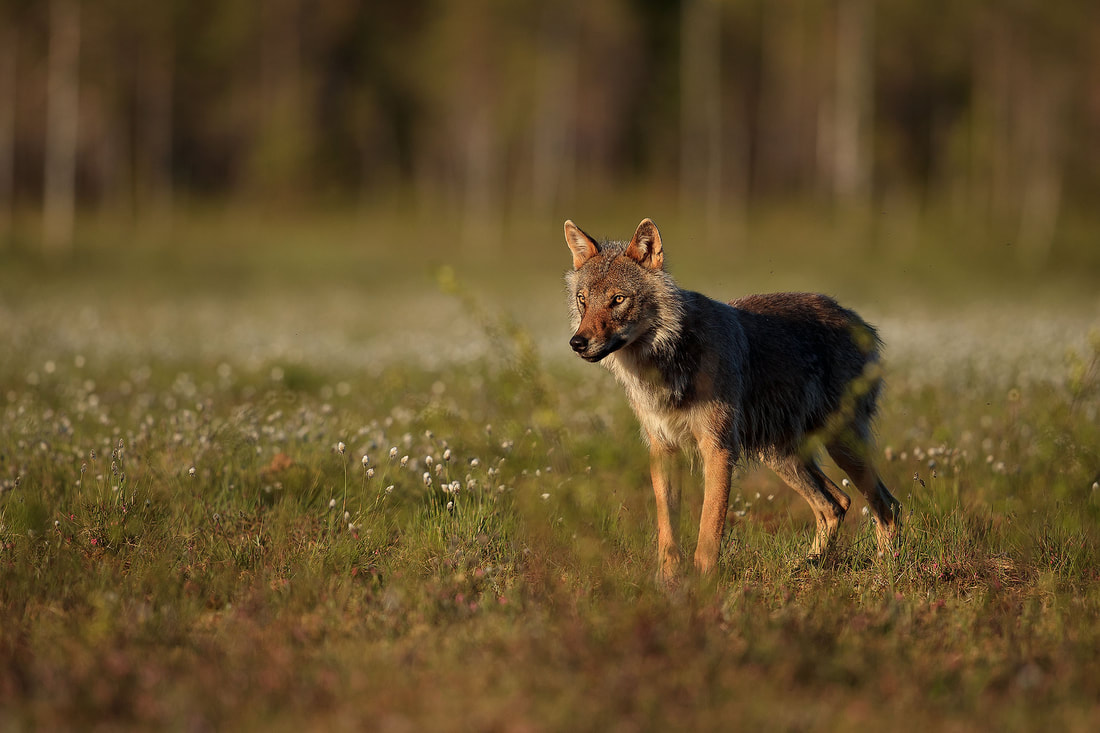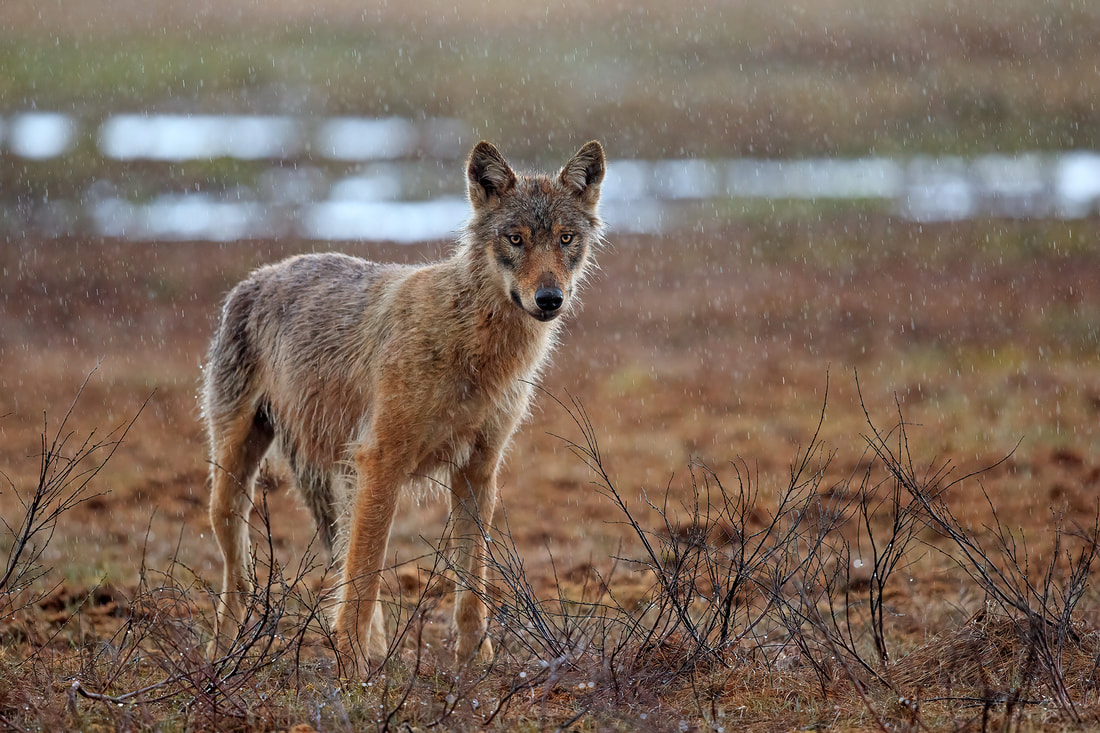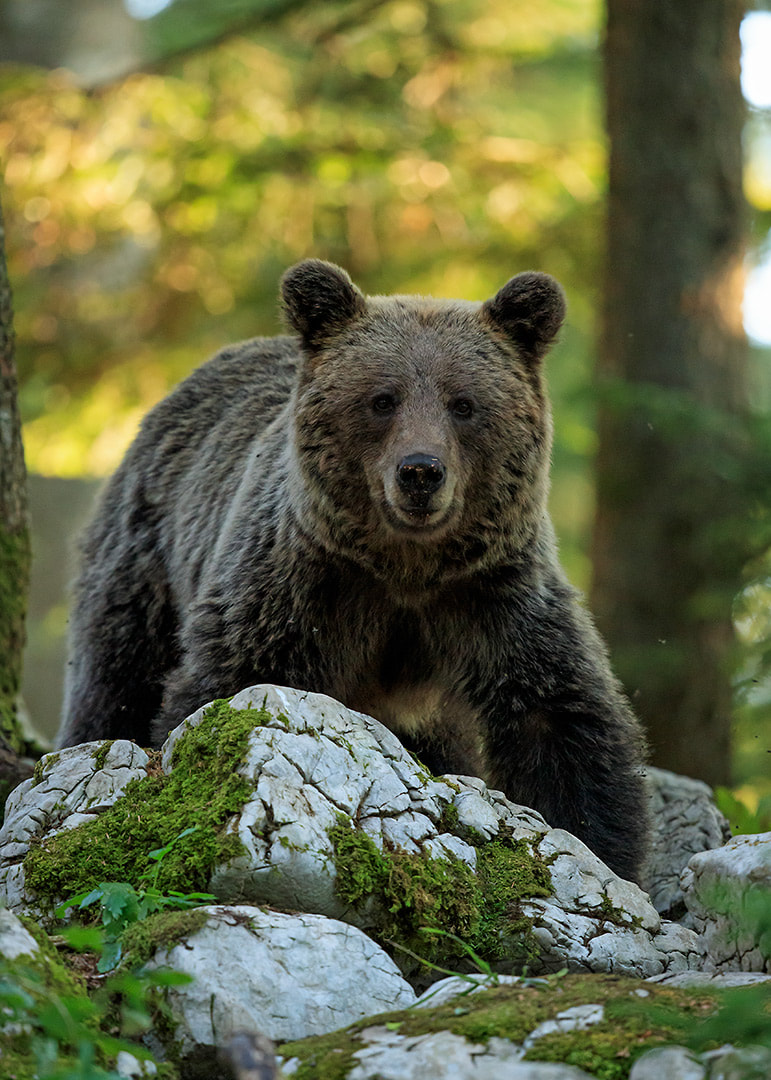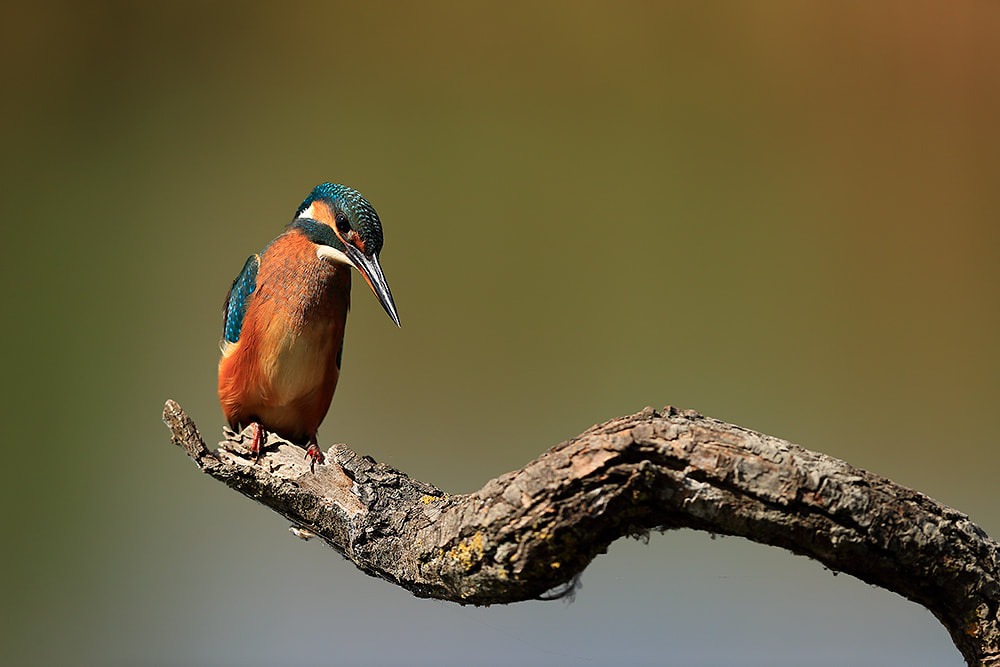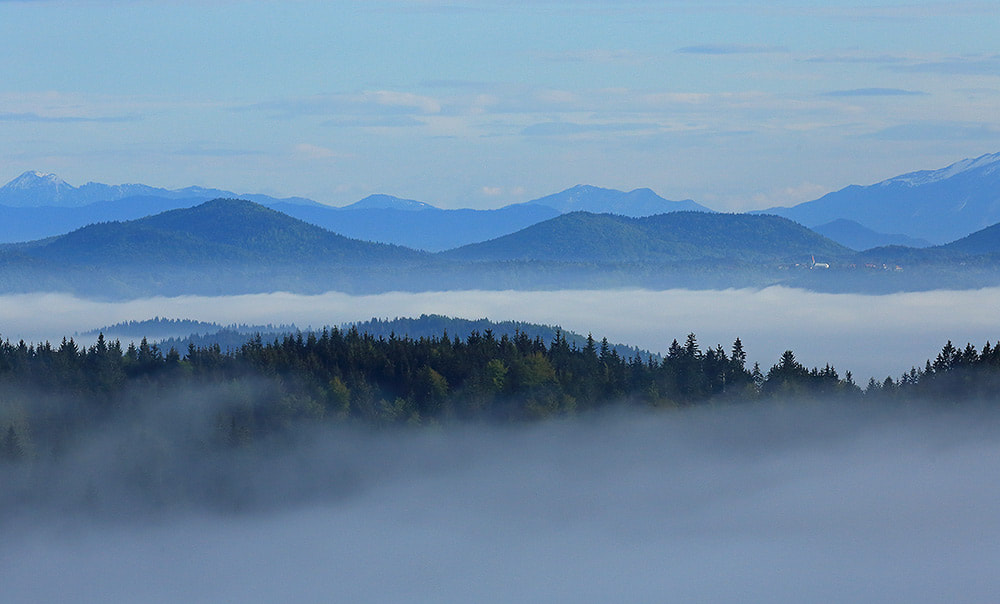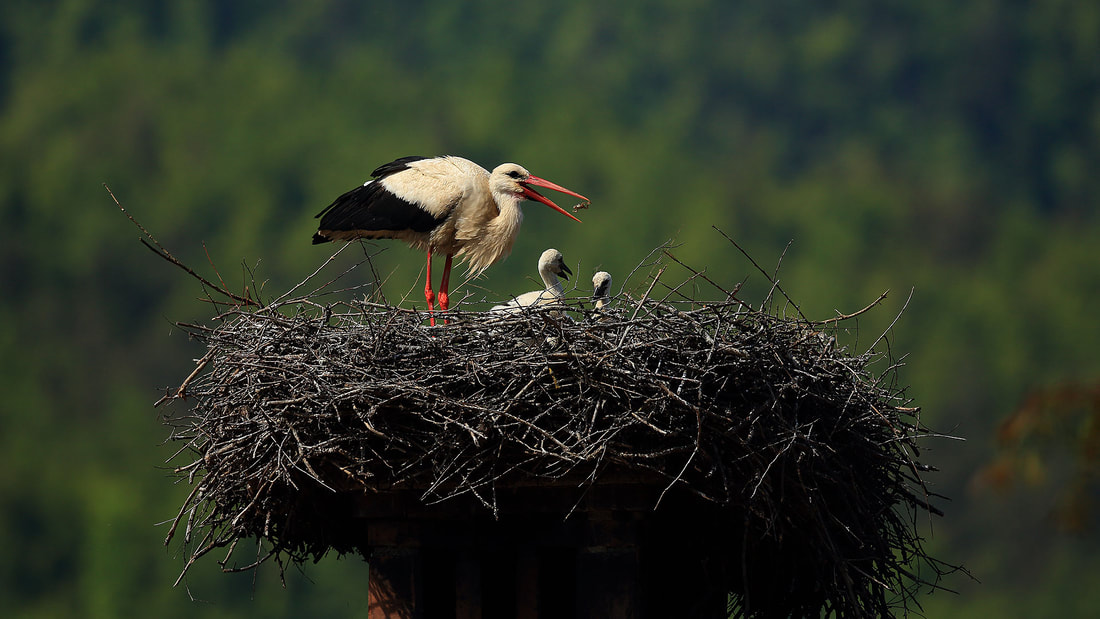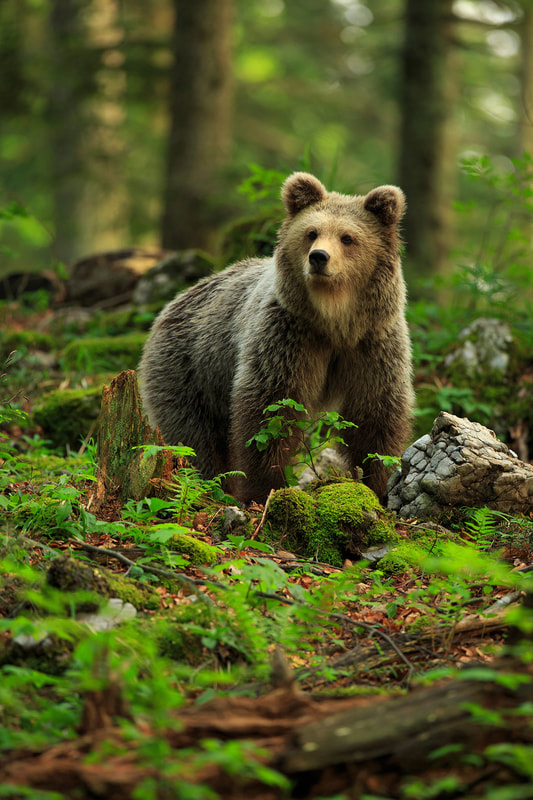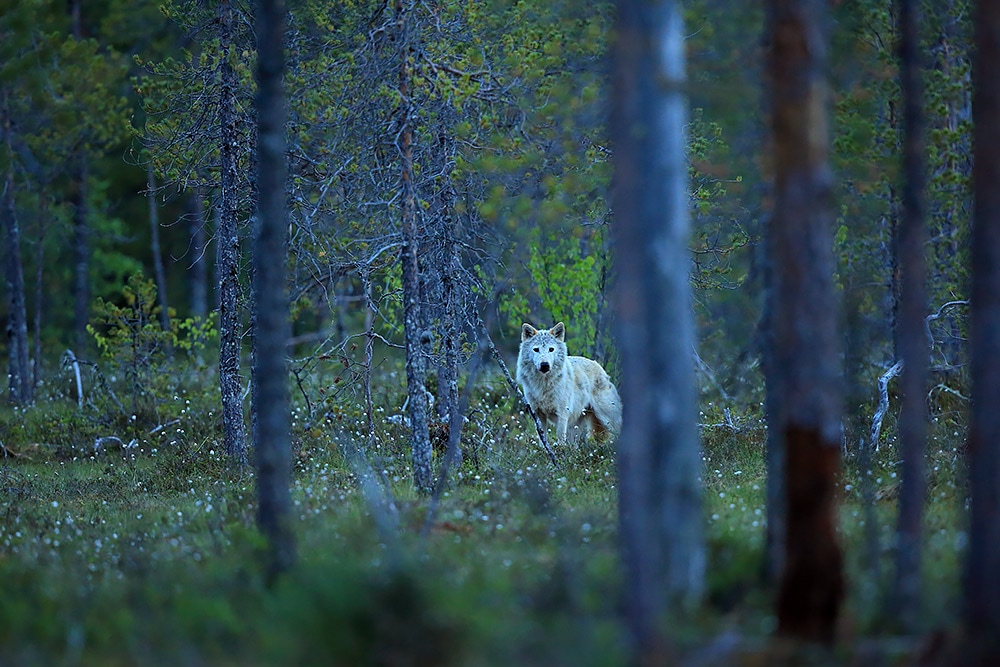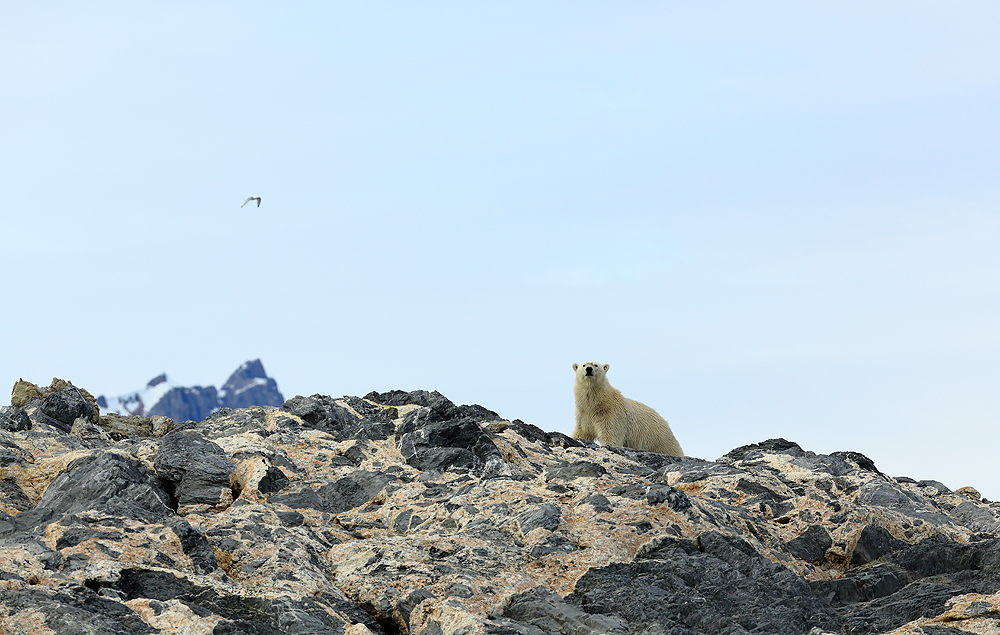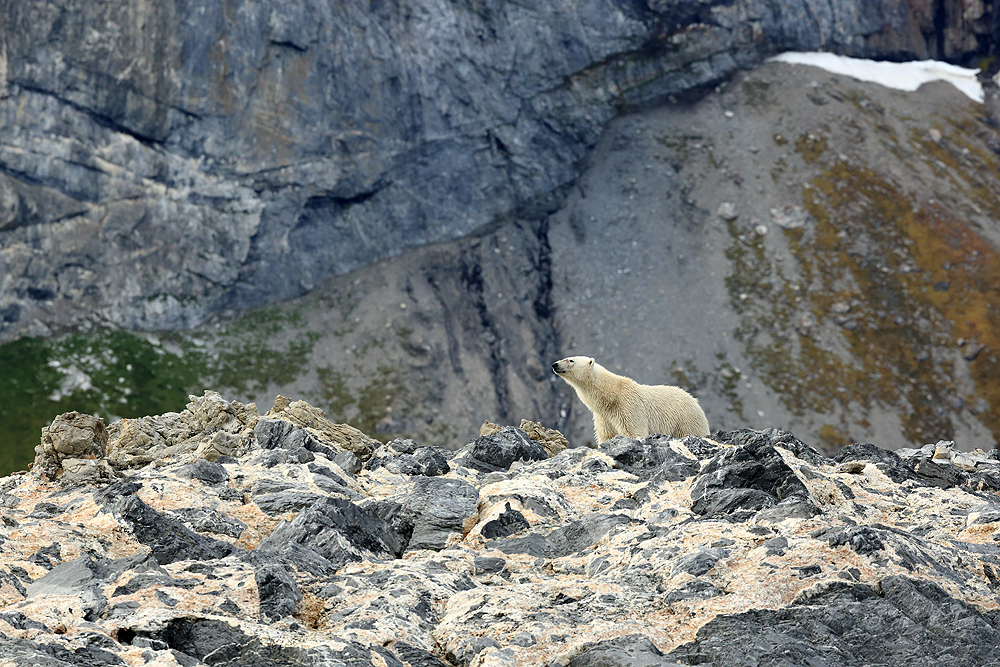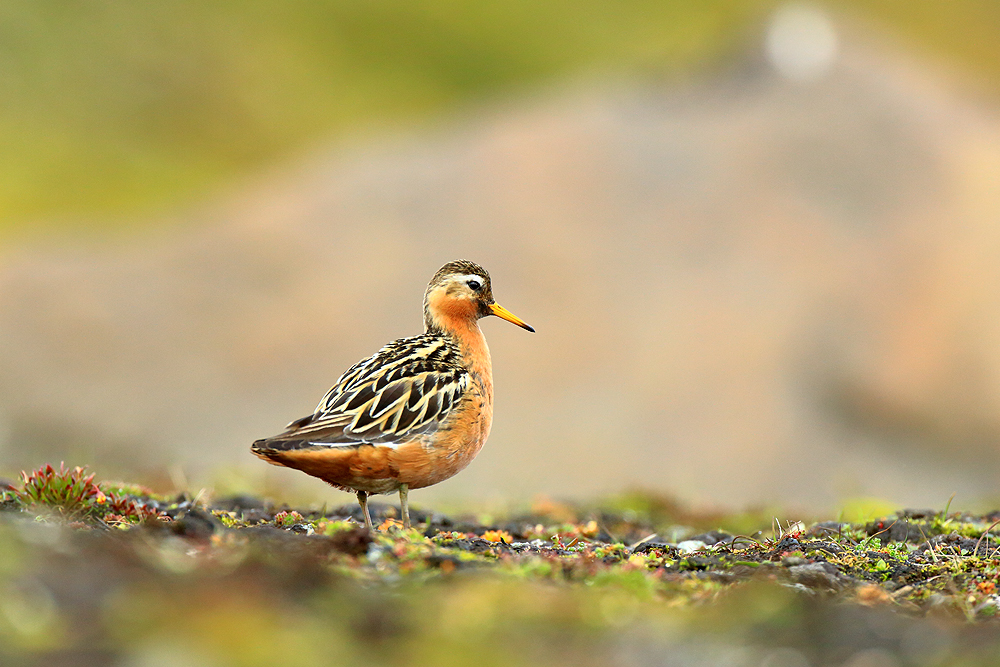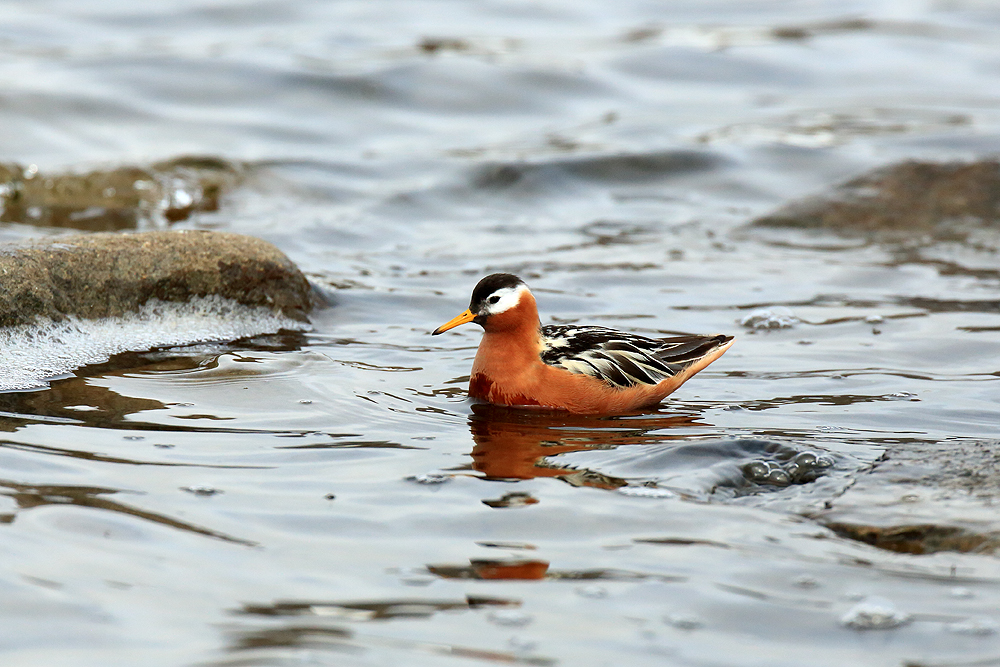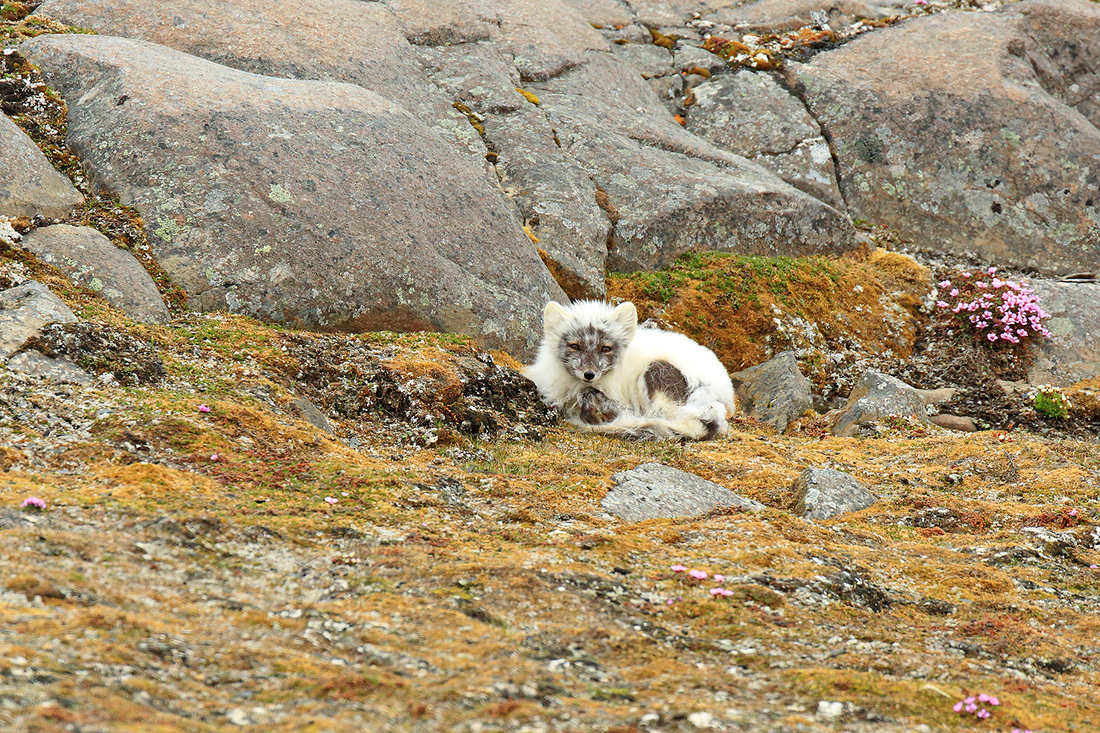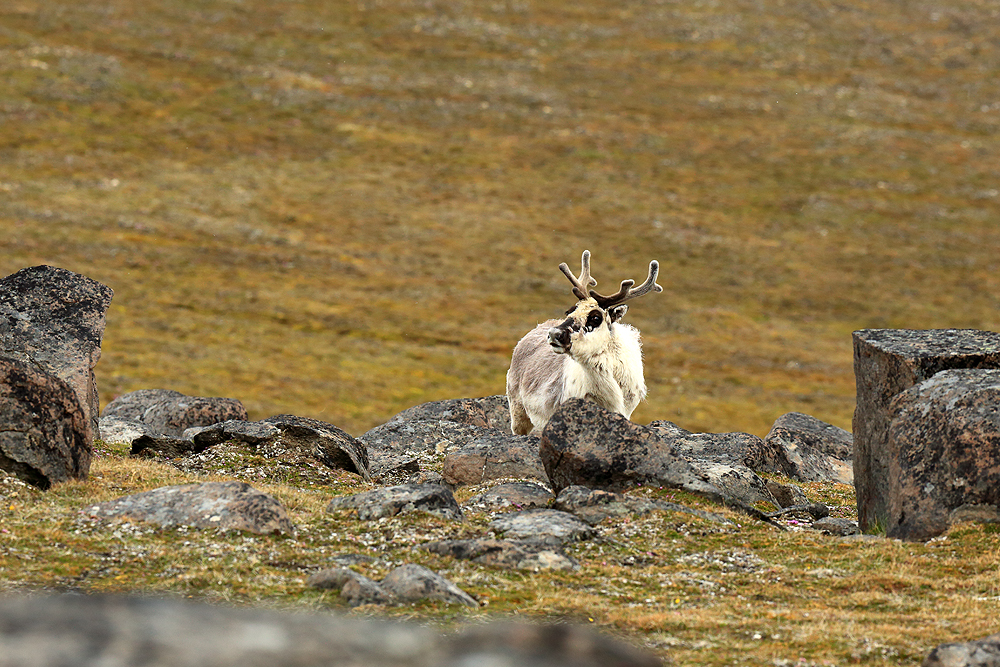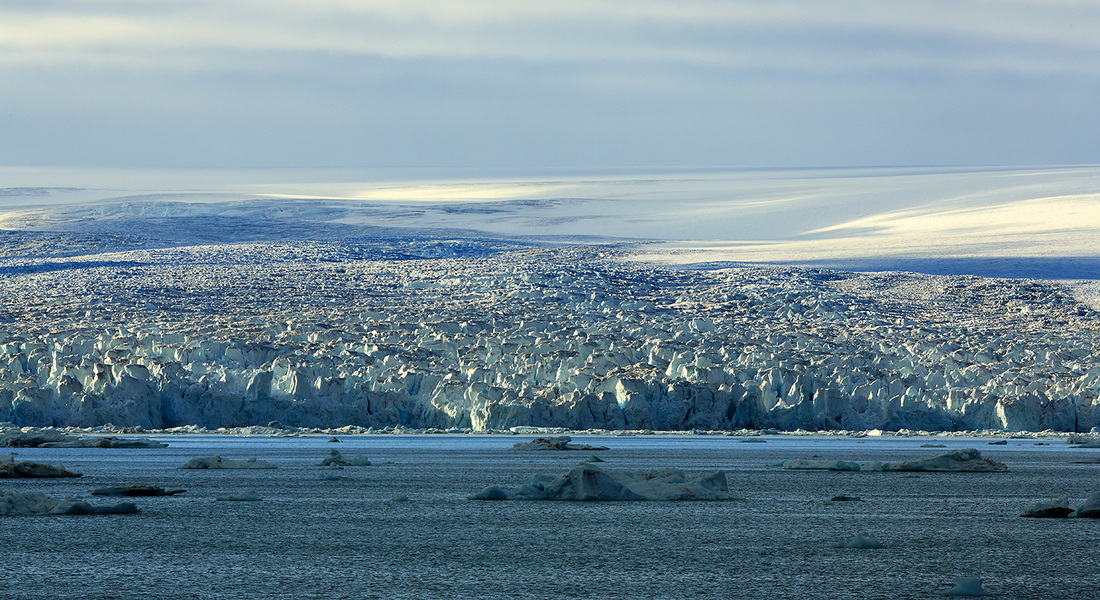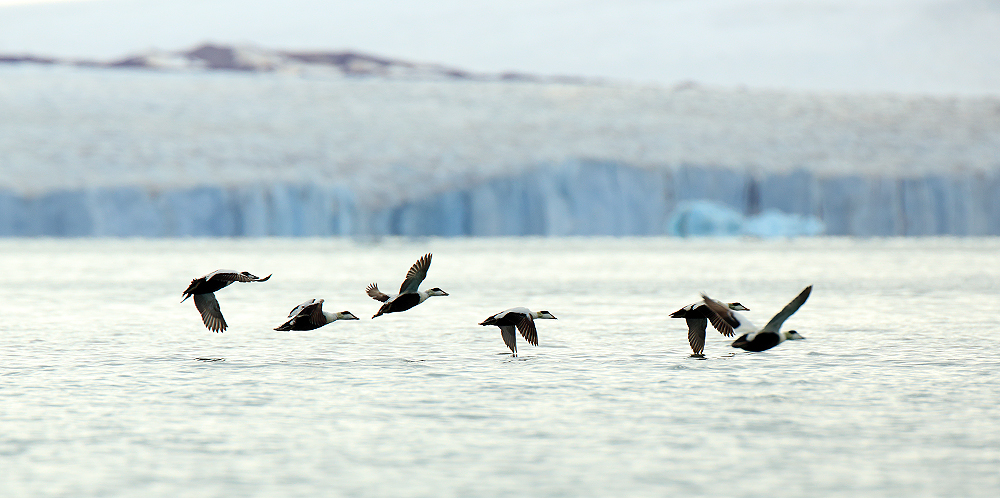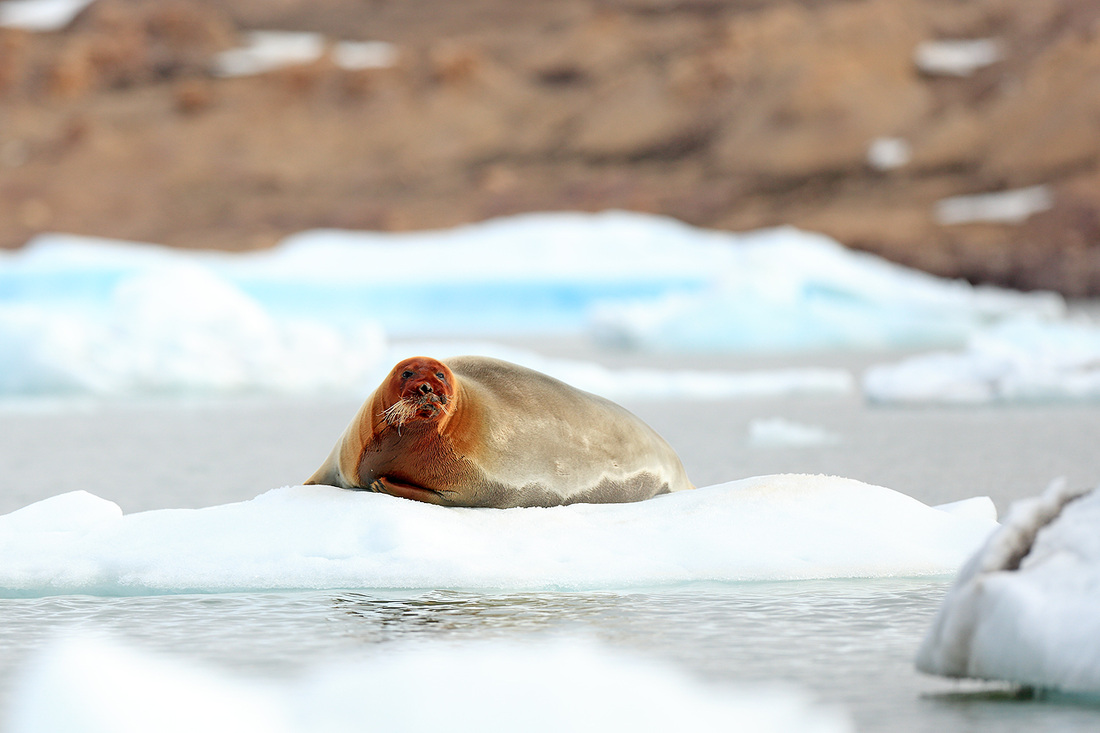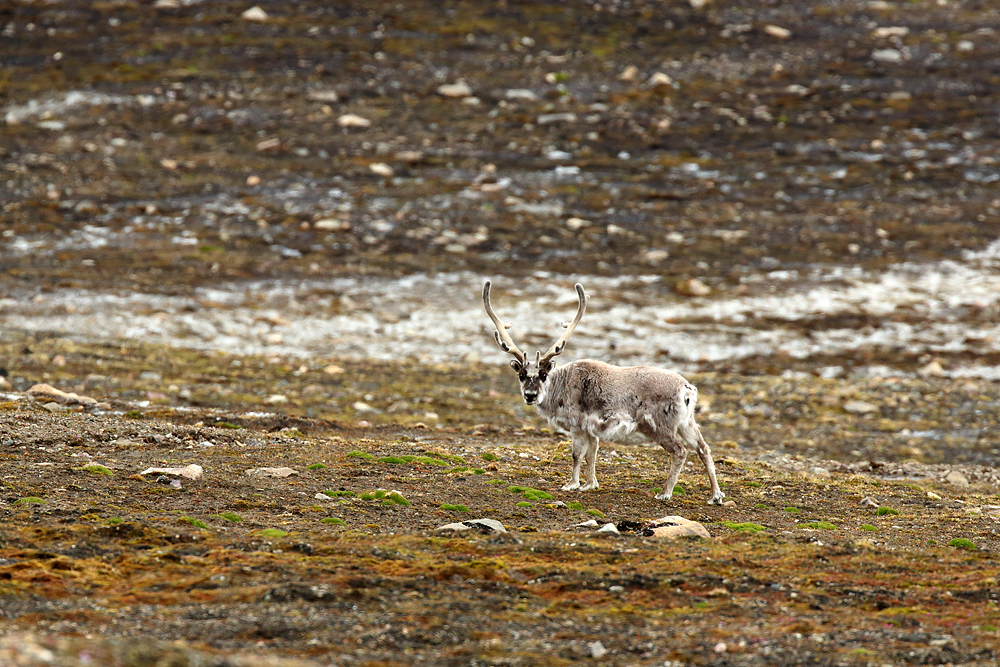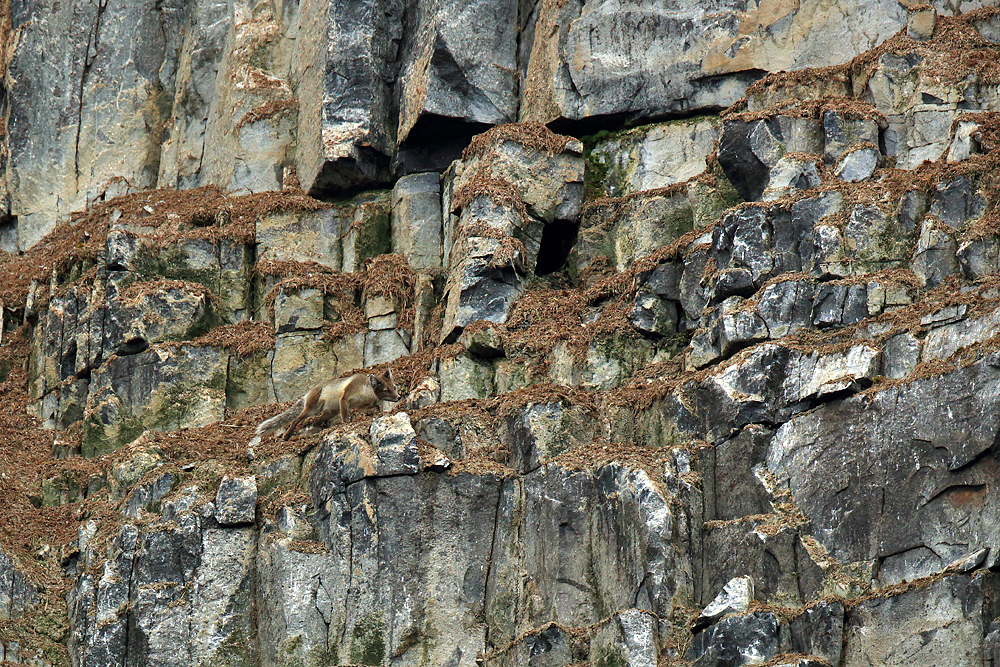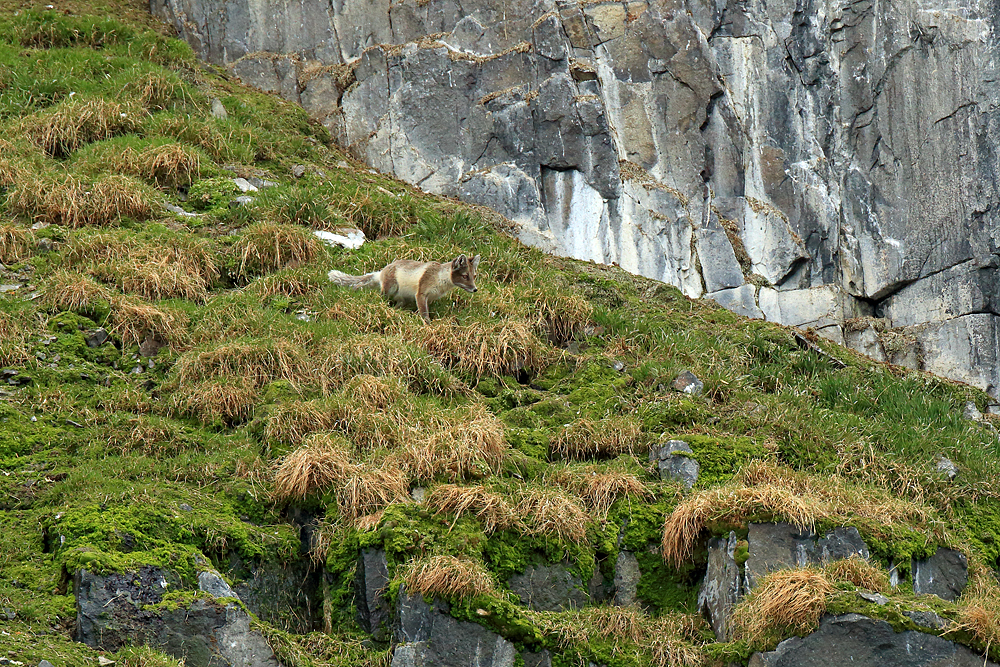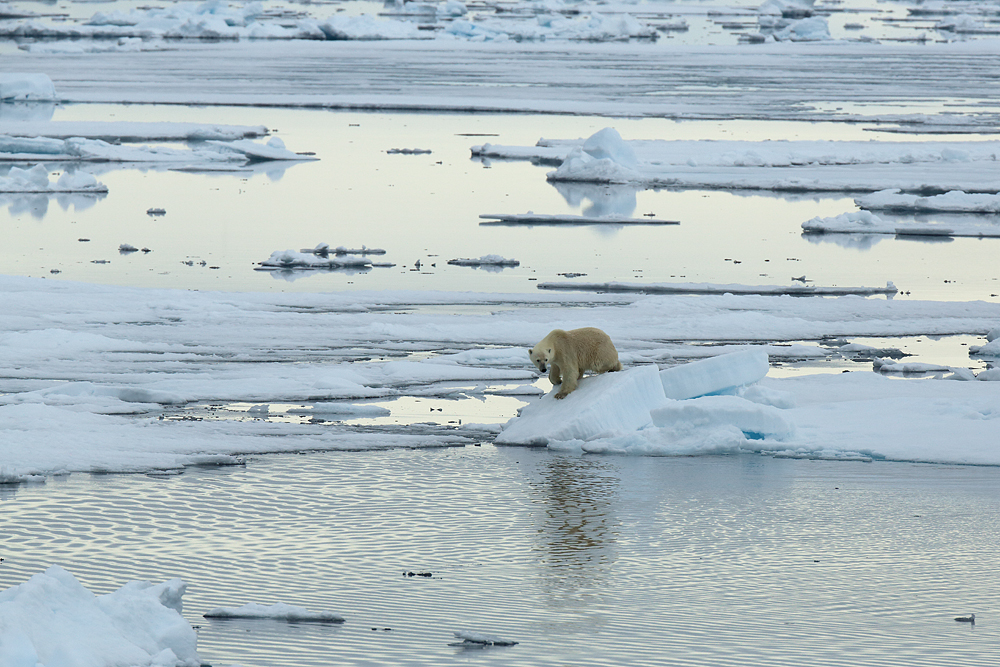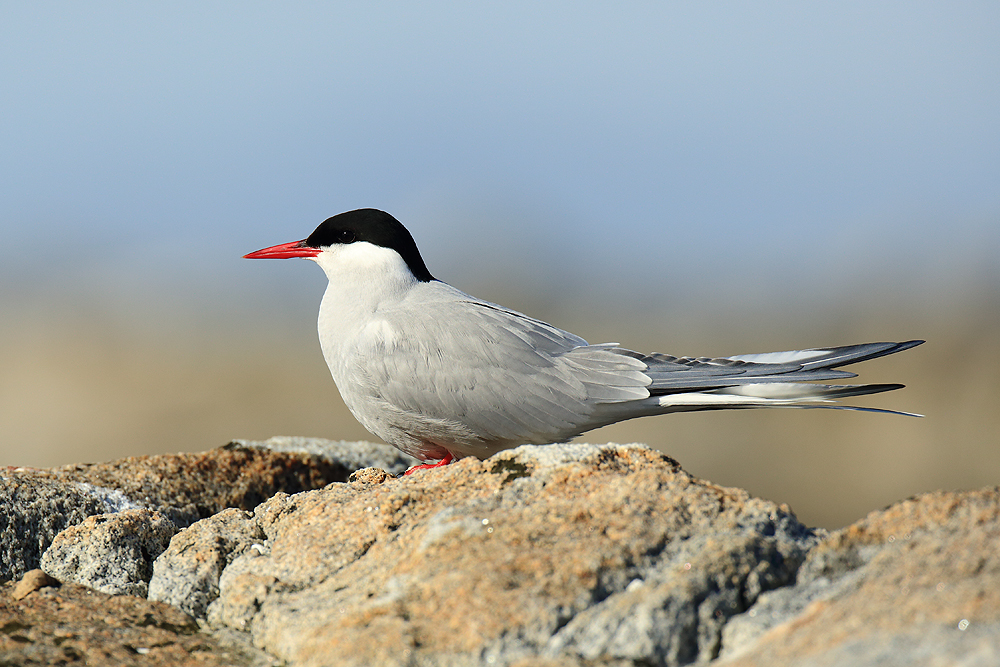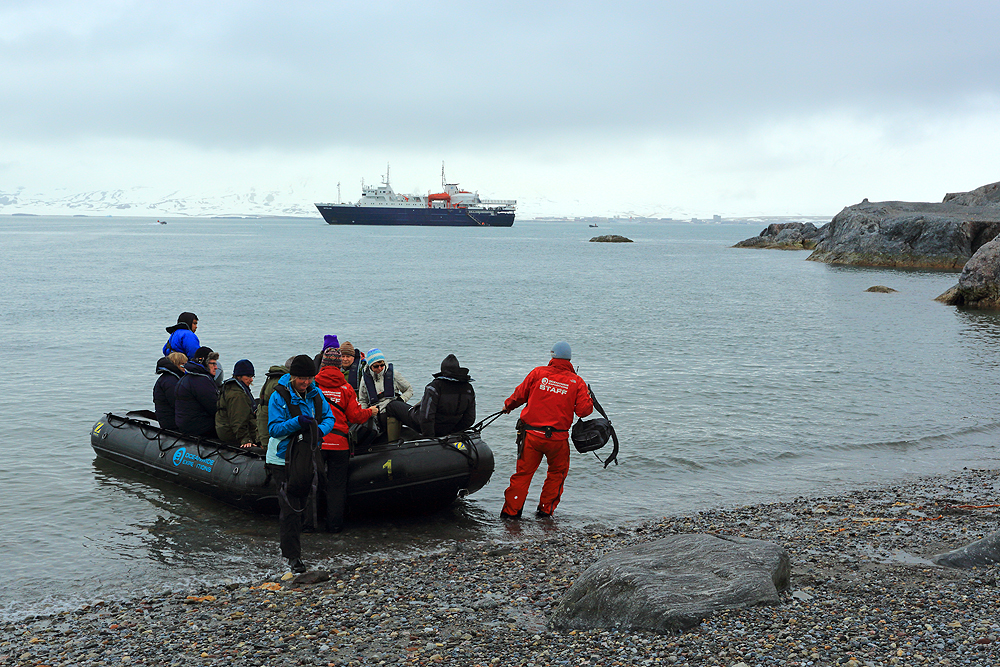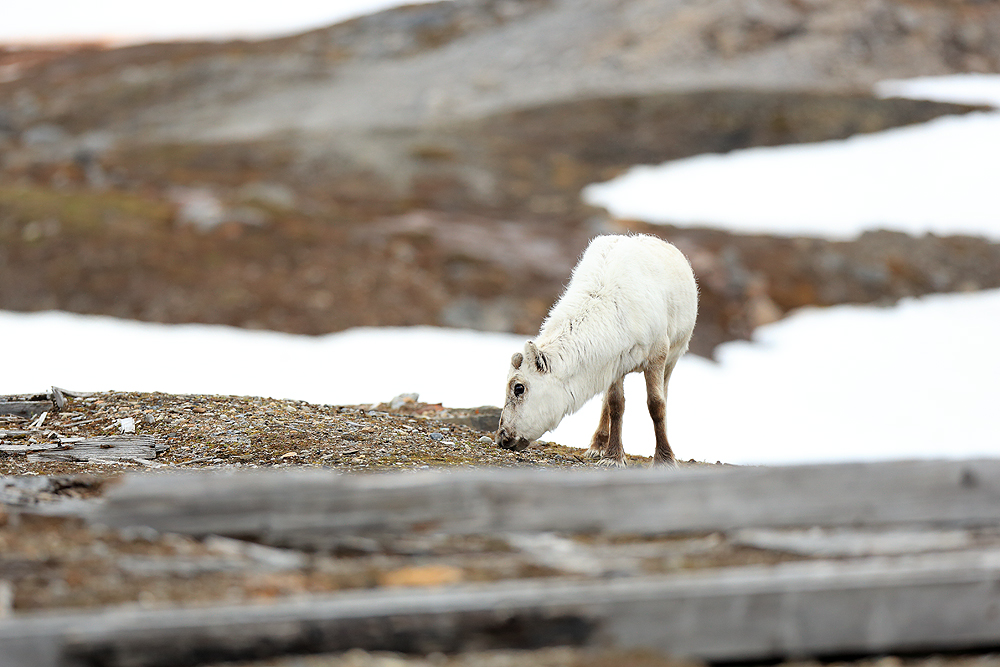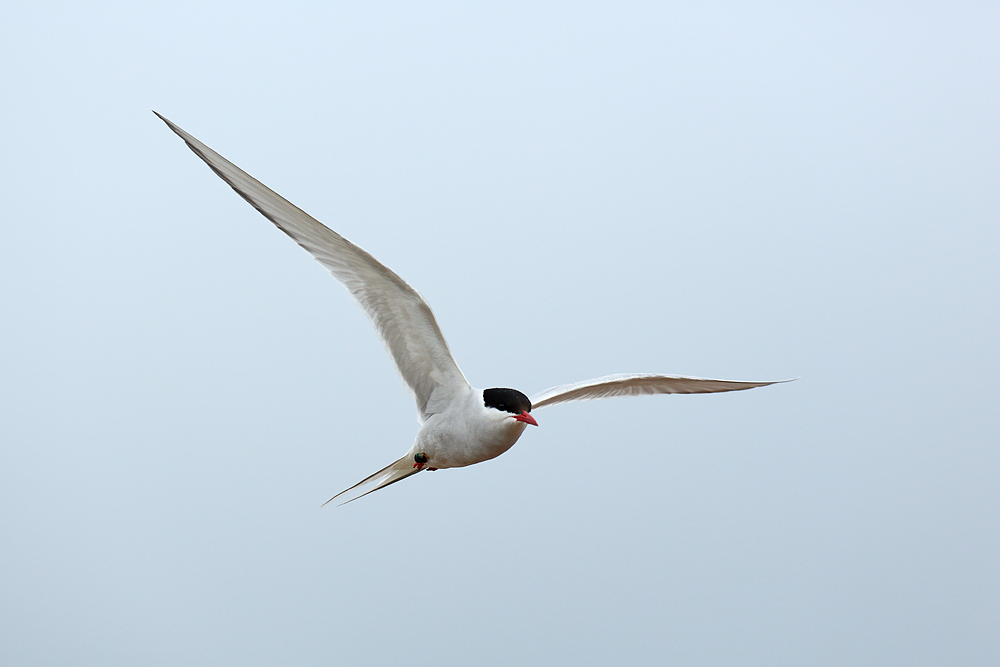|
I have been photographing in Finland for the past 10 years and absolutely love being in the purpose-built hides set within the boreal forests. This remote region of eastern Finland, along the border with Russia, is home to some of Europe's most elusive wildlife including brown bear, grey wolf and even wolverine. I was delighted to lead back-to-back photography tours for Wildlife Worldwide staying at the isolated Kuikka Base Camp. Here are a few highlights from the time I spent in the hides with my dedicated and patient clients. Long hours and vigilance paid off with some stunning photography opportunities - particularly of wolf. As well as the wolves we were treated to excellent views of the increasingly rare wolverine as well as a young bear. It seemed that the bears mating season was running late this year and so we struggled to see as many as we would usually expect. The wolves were the real stars of the show and we really did have some memorable moments as they came incredibly close to the hides. Keep your eyes peeled for the next blog to enjoy more images of Europe's apex predators in the wilds of Finland's stunning taiga.
0 Comments
It has been another action-packed year for me. With the travel sector back in business, I was busier than ever (making up for lost time) leading tours left, right and centre. With such a busy year, I haven't really had time to focus on my own projects, but I was able to capture a few wonderful moments when out in the field with clients. So with that in mind, I thought I would share my 'Top 5' images from the year of 2022. I should add that these are in chronological order and just a small selection of some of personal favourites. In case you haven't yet realised, I really love taking portraits of wildlife. I would love to know which is your favourite. The wonderful thing about photography is that it is completely subjective. My decision making behind this selection is probably biased, as my memories of each moment are likely to change my perception of the image itself. Anyway, I do hope you enjoy them.
2023 promises to be another busy year and I will do my utmost to keep this blog up to date. In the mean time, I have two more posts to come from my Colombia tour, another focusing on South Luangwa in Zambia and a final one from Australia. Happy reading! This year I had the privilege of leading three photography tours in Finland's remote eastern forests, right on the border with Russia for Wildlife Worldwide. Across the three trips we had some incredible sightings and exceptional photography, but as always, each had its own highlights. In this blog I am going to share some of my favourite moments from across the three tours. The magic of this remote landscape, is that you never really know what will show up and when. On one particular tour we had an awful lot of close encounters with a young grey wolf, another we had multiple wolverines and on the third we had the opportunity to photograph a great grey owl nest. Here is just a taster of what we saw ... As you can see, no matter what the weather, there are always excellent opportunities to capture some stunning imagery. The grey wolf above hung around for a couple of hours one evening and the rain just added to the moment. For me, the wolves are definitely the biggest draw. It is the only reliable location I know of where it is possible to capture stunning imagery of this elusive species. However, the area is fantastic for wolverines and brown bears, meaning there is never a dull moment. It is even more exciting when the different species show up at the same time. It is important to say (as I always do), that food is put out to entice the predators in front of the purpose-built hides. Furthermore, the food put out is typically salmon scraps or meat that is not fit for human consumption. There is the chance to join me in 2023 and photograph these incredible predators for yourself. You can find out more on the Wildlife Worldwide website and book your place on this wildlife photography extravaganza.
Well what can I say about the past 18 months - quite simply it has been pretty tough. I have been unable to lead any overseas trips since the start of the pandemic and only led a limited number of UK-based workshops. However, back in September, I headed off to the stunning hills and forests of Slovenia - one of my favourite corners of Europe. The Dinaric Alps are a wildlife photographer's paradise, home to over 800 European brown bears and a myriad of other species. I spent 7-days in the wonderful hides which I use when leading my tours to Slovenia, building up a great little portfolio of images. In the time I was there, I photographed over 10 different bears, including a number of mothers and their cubs. I can't wait to get back out in the field and leading tours once more. over the next 12 months. As you can see from these images, the surroundings for my sightings were exceptional and I was blessed with exceptional weather. You can join me in Slovenia next year for the opportunity to photograph the Dinaric Alps' population of brown bear.
Back in September I went on a trip for Wildlife Worldwide to Romania’s Danube Delta (for the first time). I had heard great things about Europe’s largest river delta and knew whatever happened, I would experience somewhere completely different to anywhere I had been before. I stayed at the purpose-built property known as Ultimate Frontiera. Specially designed for wildlife photographers , the purpose-built hides are spread across the estate and provide the opportunities to photography a myriad of different species. On my first morning in the hides I was hoping to photograph the pygmy cormorant, an elusive and rarely seen species. I did get a couple of shots of pygmy cormorant, but it was a common kingfisher that proved to be a real delight, posing perfectly in front of the hide only a few metres away. I have tried photographing kingfishers in the UK and never had any luck, whether it be from purpose-built hides or sitting patiently on a river bank. So, finally, to be rewarded with shots like this was a real treat. It wasn’t just kingfishers that proved to be particularly cooperative, we were treated to some great views of little owl, a wide variety of small woodland passerines, squacco heron and great white pelicans. We were even luckier in the fact we got to see a solitary Dalmatian pelican, of which there are fewer than 2,000 left in the world. It also proved to be a particularly reliable place to photography golden jackal, which are moving further west into Europe each year.
It was a great place for anyone with a passion for bird photography, and I can only imagine that during the spring it is full of life. I highly recommend you join Wildlife Worldwide in May to get your very own Romanian bird photography fix. I hope you like the pictures – and don’t forget to head off to Romania and see it for yourself! This year marks the third year in a row I have been to Slovenia to photograph brown bears in the Dinaric Alps. As I am sure you all know, I am extremely lucky to travel far and wide for my work, but Slovenia has a certain something about it. Of all the trips I lead for Wildlife Worldwide, Slovenia is one of my absolute favourites. Slovenia has moved into the 21st century without losing its charm, it still has character and its own identity. Idyllic mountain villages, breathtakingly placed churches, vast caves and exquisite wildlife all add to this charm offensive – I don’t know anywhere in the world that does it so well. Of course the primary reason for visiting the Notranjska region of Slovenia is for its thriving population of bears. This year we were once again treated to some wonderful sightings of bears, all from the purpose-built hides. The first couple of days were a little slow, but I think the heavy rain and cold conditions were definitely a factor. After that though, we had good sightings of bear each evening, providing some fabulous photography opportunities. What I really love about photographing bears in Slovenia, compared to other places in Europe in particular, are the stunning forest settings in which the bears can be seen. You can build up a stunning portfolio in just a few days, and this year my group did just that.
I will be heading back to Slovenia in August for my own photography and I look forward to seeing the landscape at the end of summer. Sadly, in 2020, I will not be leading the Slovenia tour organised by Wildlife Worldwide as I will be leading in Svalbard instead – hopefully photographing some white bears instead. Rest assured though, the trip will be led by another talented photographer in Tom Mason, and the trip promises to be another roaring success. I am really proud to work and lead trips for Wildlife Worldwide, one of the UK’s largest specialists in wildlife travel. What I particularly enjoy is that the office is set within an old barn in the charming village of Bishop’s Sutton, what’s more is we have a resident pair of barn owls.
Earlier on in the summer I spent a bit of time trying to photograph the owls. They are really easy to spot, but not so easy to photograph, particularly as there are quite a few buildings around. Anyway, here is a little taster of what I have been privileged enough to watch after finishing work in the evenings. That's right folks, I have been to Skomer once more and it still isn't enough. It is never enough!!! My third and final visit of the year was leading Wildlife Worldwide's second Skomer's Perfect Puffins tour in 2018. It as a roaring success and I was joined by acclaimed photographer and film maker Ben Cherry - check out his awesome work here. Now then, normally a visit to Skomer Island coincides with gale force winds, lashing rain or perhaps ice blasts. Well this trip was a little different - it was quite literally like being on an island in the Mediterranean summer. To be succinct, it was sublime. To top it all off, we had a great group of people and some fabulous wildlife and epic light. You really cannot ask for more than that. So on to the pictures... When it comes to photographing puffins, it nearly always starts with a classic portrait. It is just good to get yourself warmed up, then you can start to be a little more creative and try a few different types of shots. For me, having already accumulated thousands of images of puffin, I now try to capture something different and this trip was no exception. What was incredible though, was watching the sun rise over the Pembrokeshire peninsula and setting over the Irish Sea, without there being a single moment it disappeared behind a cloud. So we enjoyed wall to wall sunshine from 4.45 all the way through to 22.00. Remarkable! It also wasn't just about puffins. When you have guillemots, razorbills and a friendly seal there are near endless photographic opportunities. After a the magic of being able to photograph the puffins in some wonderful light, our final excursion was out to Grassholm island in search of one of the world's largest northern gannet colonies. Here is just a little taster of what this remarkable place looks like... You can register your interest for Skomer's Perfect Puffins in 2019 here. Dates should be released by the end of October 2018 so please be patient.
It has been a crazy few months for me – I have been leading trips left, right and centre. No moaning from me though as it has been absolute delight to take so many fantastic people all over Europe, showing them some of the most incredible wildlife and hopefully helping them get some great images too! The next instalment in this summer’s schedule was a trip to one of my favourite spots, right on the Finland’s eastern border with Russia. It is here I lead Wildlife Worldwide’s Boreal Predators Photography tour, which gives my clients a chance to photograph European brown bear, grey wolf and the feisty wolverine. All I can really say about this year’s tour was wow, wow and well… WOW! We were treated to a remarkable number of sightings of all three species and the photography opportunities were mesmerising. Even with a faulty camera I was able to capture some awesome images, my clients images really blew me away so it was a hugely successful trip. And now to the photos, all I will say is that I hope you enjoy them… It must be said that every night in the hides was productive and they allowed the entire group to capture a wonderful array of images. What I have included here are just a small taster. I have only included on wolverine as I was always in a hide that didn't have the prime views. It is very important to me that my clients are the ones who get the best images, after all it is their holiday and I want them to get the most out of the experience. On the last night of the trip the whole group were treated to some breathtaking sightings and unrivalled photography opportunities. The images above (I think at least) perfectly demonstrate why Finland is such a superb destination for a photography holiday. The light is absolutely brilliant, the wildlife is stunning and the photography is very hard to beat.
So if you fancy joining me in 2019 for another foray into the boreal forests of Finland, be sure to visit Wildlife Worldwide's website for more information. My first photography tour of 2018 was to the beautiful country of Slovenia. In the middle of May, I took 8 clients with me to the Dinaric Alps, where everyone was hoping to photograph brown bear. This was Wildlife Worldwide's Brown Bear Photography tour. Now I need to make something clear from the start, Slovenia is one of Europe's hidden gems. It is a country filled with history, stunning landscapes and fabulous wildlife. To top it all off, the food is fantastic. Slovenia's Dinaric Alps, in the southern reaches of the country, are home to between 700 and 800 bear, one of Europe's most important populations. This karst landscape, filled with caves, disappearing rivers and lakes, also supports and array of other species including Ural owl, beech marten and even wolf. This trip was focused on the bears and the Ural owl, with of course the stunning mountains, wild flower meadows and charming villages as a wonderful backdrop. Over the course of the next 6 days we were treated to some superb encounters and all of the clients managed to capture some excellent images. After a great first night in the hides we went in search of the Ural owls and were blessed with some great encounters. Slovenia is home to the highest density of breeding Ural owl in Europe, so with a bit pf persistence, you can often come away with some good photography. The karst limestone landscape is famed for its caves and Slovenia is no different. If you read my last blog post on Slovenia (from last year), you will have seen that I visited Križna jama - a beautiful cave filled with water. We journey a few kilometres underground and explore the remarkable caverns and their unique rock formations. Of course, for most people it is all about the bears and that was this unique trip is all about. So all of the group spent the majority of their afternoons in the hides, waiting for the bears to show themselves. As you can see from all of the images above, Slovenia offers something very different from other bear watching destinations and it really is quite magical.
If you would like to join me on this amazing trip in 2019 then please head over to Wildlife Worldwide and find out more. All I can do is apologise for the lack of posts on this blog … there is no real excuse. Sadly, I haven’t been out with my camera enough recently and with a very busy year ahead leading a range of tours, I took a few days off and headed to Skomer Island with my old man. The trip was a Christmas treat for my dad, but it was also an excuse to get out there and try my new 1DX II and the new EF Canon 500mm f4 IS II USM lens. The main reason for going to Skomer is to spend time with the puffins. However, this year has been unseasonably cold and all of the seabirds seem to be a little behind their usual breeding cycle. The island’s plantlife has also been delayed, so we spent a few rather cold days in a pretty brown landscape. Let’s just say I wasn’t left disappointed as this provided something completely different to what you usually get on this rocky outcrop in the Irish Sea. I must say that the first day was a little wet. Scrap that, the rain was relentless and after only an hour out in the sodden landscape I was soaked through. We beat a hasty retreat back to the relative warmth of the island’s accommodation. I only took a few photos in the evening but the light was, well it was awful. The fact it was easier to photograph the island's large rabbit population, rather than the puffins, speaks volume as to the day's activities. The second day on the island was a completely different story – the Sun shone for the day’s entirety. And the photography opportunities were almost limitless. It wasn’t just the puffins that cooperated either, there were a myriad of other species who were keen to get their moment in the spotlight. The puffins were particularly quiet during the day, but as they are either sitting on an egg, or ready to lay said egg, or perhaps out fishing it wasn't a complete surprise. However, as the sun started to set I was blessed to an hour's worth of exquisite light, obliging birds and countless photographic opportunities. The above are some very low res version of the images I managed to capture in that glorious golden hour. They are only a sample of what I was able to capture, but I hope it gives you an idea of what you can do by playing around with light and trying out different ideas.
I will be back in Skomer in May and June this year, leading trips for Wildlife Worldwide, so keep your eyes peeled for more images in the coming months. Next week I am leading a trip to Slovenia's Dinaric Alps with Wildlife Worldwide - you can find out more about the tour here. A land of countless lakes and seemingly infinite forests, Finland is one of Europe’s wilder corners. In recent years the country has become well regarded as the finest bear watching location outside of the Americas. However, I had heard of a particular location (right on the Russian border), where it was possible to see and even photograph European Brown Bear, Wolverine and even Wolf. This place sounded too good to be true! So after a lot of digging and hours of reading through reports, I had all of the information I needed. In the end I decided it would be a great place to run a wildlife photography tour with Wildlife Worldwide. We have named the tour ‘Boreal Predators Photography’ and it certainly lived up to its name this year. Towards the end of June I set off with 6 eager clients, all keen to photograph the iconic species of this border region, or ‘no man’s land’, between Finland and Russia. Now I must start by saying that Finland hasn’t really had a spring in 2017, and therefore all the wildlife’s behaviour has been particularly unpredictable. We spent a total of 4 nights in the hides, all of which were different. This year was particularly cold, which makes it much harder to get comfortable within the hides, but our perseverance paid off in the end. The first night was a little disappointing with only a couple of bears seen at a bit of a distance, one of which was particularly nervous. Don’t get me wrong, it is still incredible to see the magnificent mammals, it was only disappointing from a photographic opportunity point of view. The second and third nights made up for it though, with at least 4 different wolverine spotted across 3 locations (the group had to be split on the second evening), the very nervous bear made another appearance and the icing on the cake had to be two Grey Wolves seen on both nights. On the second evening, a client and I were treated to a pair of Wolverine – the light was at its worst when they appeared, but we got a few acceptable shots in the end. Just as we thought the evening was coming to a close, it was probably around 3 am, I noticed a light shape moving on the edge of the forest. It was obscured by a light mist, but there was no mistaking what we had in front of us. It was a Grey Wolf … in fact there were two wolves. It was a magical encounter, a real privilege and a challenge to photograph in such low light and the mist. It was the last night of the trip when everything really came together. We were only going to be in the hides until around midnight as we had to leave first thing for our flight back to Helsinki. I decided we should try our luck at the pond, where I had previously seen the two Wolverine and wolves. I can honestly say that the evening was one of the very best I have had in my career. The light wasn’t necessarily the best, but the sightings we had are some of the finest anyone could possibly ask for. In fact, the evening actually started relatively slowly. It all seemed like it might be disappointing end to the trip. As the sun was losing its strength and retreating over the tree line, one of my group spotted a large bear moving through some marshy ground. It was heading right at us, slowly powering through the swamp. You could hear the strength of every movement, it was absolutely incredible. The bear posed perfectly for us and the whole group managed to get some wonderful shots. Having had its fill on the salmon scraps left out, the bear slowly made its way back towards the forest, slowly melding into its wooded surrounds. Having had such a remarkable encounter, everybody seemed to be settling back into their seats (figuratively speaking), when I noticed a familiar light shape on the edge of the treeline. I stopped myself from saying anything, took a breath, then raised my binoculars and my jaw slowly dropped. I knew what it was, but I didn’t really believe we could be so lucky. Surely I was suffering from sleep deprivation? There some 70 yards away was a white wolf, the one I had seen at a distance on the previous two nights, and it was followed by a second wolf. The white wolf was the female, whilst the second was tan colour, and this was the male. The female slowly made her way towards the hides, seduced by the smell of the fresh meat of a carcass. The next 15 minutes were spellbinding. She came to within only 20 metres of the hide … it was her size, her obvious power and that stare that left me breathless. I have never known a stare like it. I have been all over the world, photographing Polar Bears, Leopards and Tiger, but never has an animal looked at me with the same intensity or intelligence. This really was a once in a lifetime encounter and one that will stick with me for the rest of my days. If you would like to join me in Finland, I will be leading another ‘Boreal Predators Photography’ tour with Wildlife Worldwide in June 2018. I can’t promise the tour will be the same as this year’s, but I can guarantee it will be a great adventure.
For the entirety of this trip I was using a Canon 500mm F4 IS II USM lens which was kindly provided by Fixation. I will be writing a separate post with a review and my thoughts on using the lens if the field. Towards the beginning of June I was fortunate enough to lead a small group of photographers to the island of Skomer. This rocky outcrop, which sits just off the Marloes Peninsula, is one of the UK’s seabird strongholds and supports around 6,000 pairs of breeding Atlantic Puffins. These charming little birds are what most visitors come to see on Skomer Island and it certainly doesn’t disappoint. It has to be one of the UK’s finest wildlife experiences – quite simply it is hard not to smile when you see your first Puffin. Only about the size of a pint glass, these small birds are one of the world’s great ocean wanderers, their tenacity and dedication to their chicks is truly inspiring. They provide the perfect focus for this short photography break. I spent 3 nights on Skomer, having only planned on staying for 2. It turns out that my clients (and me) were experiencing some of the worst low pressure systems for many a year, we were stranded on the high cliffs of the island for an extra 24 hours. Although it was a little inconvenient it provided further opportunities to enjoy the island’s varied birdlife including 300,000 pairs of Manx Shearwater (only possible to see in the dead of night), thousands of gulls (Greater and Lesser Black-backed as well as Herring), Guillemot, Razorbill, Kittiwake, Short-eared owl and the list goes on. I thought I should give you a little taster of what this exciting trip is all about, so here are some of my favourite images from the trip. After arriving on the island around 1pm on the first day and then having a hearty lunch, we set out to photograph the Puffins at 'The Wick'. The Wick is famed for its large colony of Puffins, all along the top of a dramatic coastal inlet on the southern side of Skomer. As the afternoon went on the skies cleared and provided us with some spectacular light for photography (see below). The second day started quietly, as most of the Puffins had already left their cliff top burrows, they spend as much time as they can catching fish for the pufflings (yes that really is the name of the chicks). The light was already pretty bright, but the group managed to get a few images of a Raven and of course a few Puffins here and there. I was lucky enough to capture one image as a bird flew in across the water in the blustery conditions, capturing it all in a muddle in mid air. The afternoon proved to be another puffin bonanza, and many of the group tried their hand at bird in flight photography. This is known to be one of the hardest skills sets any wildlife photographer can learn, but photographing a bird this small in gusting winds is near impossible. However, a few of us got lucky and their persistence paid off. But there were also opportunities to photograph an obliging Oystercatcher and the Rabbits were about as tame as you can get! Having stayed on the island of Skomer for an extra evening, strong winds and poor visibility meant that no boats would be crossing over from the mainland. So after a morning of horrific weather, not even good for capturing images of Puffin in the rain, we headed out for one final time to add to our portfolios. For the most part, I kept my camera off, going around the group and making sure they were all getting what they wanted. So even with some of Britain's finest summer weather (by that I mean gale force winds and torrential rain), we managed to spend plenty of time with the 'clowns of the sea'. I hope to be hosting more Skomer photography trips in 2018, all in partnership with Wildlife Worldwide.
This morning we awoke to big blue skies and headed into the spectacularly beautiful Hornsund. This massive fjord is surrounded by dramatic mountain peaks and destructive glaciers. Being so far South, I have to admit I really wasn't expecting to see as much of the truly specialist Arctic wildlife. Upon arrival in this stunning setting a female Polar Bear was spotted on the shoreline and then moments later another larger bear was spotted on the far shore (perhaps a male). We would be going on a Zodiac cruise to see if we could get any closer to the bears and then on to explore the fjord ... little did we know what was in store for us all. We all met on the deck and waited to board our Zodiacs for our afternoon cruise, I was with the Naturetrek leader Peter Dunn and expedition leader Jan Belgers. We set off as one of the lead boats and headed toward the small headland where we had earlier sighted the female bear. As we approached the shore line we realised that the bear had moved on and as much as we were scanning both the water and the shore we were unable to see anything. Peter then spotted some movement on the water's surface way out in the fjord ... it was the bear, it had managed to slip by us in the ice-cold water. The bear approached an island and we all held our breaths as we prayed the bear would be a 'quality' bear. It was definitely a 'quality' bear ... The real benefit of the island was that the bear felt completely at ease and we could travel all the way round for a constantly changing backdrop. As a photographer you always want to try and capture that image that stands out and lingers in the mind, this really was the perfect photographic opportunity. Even then this was one of those moments where you just have to put the camera down and really take in the moment! We slowly moved around the island the backdrop was more than you could ever have dreamt of. We slowly moved closer and closer, all the time keeping an eye on the bear to make sure it was completely at ease. We all go the odd glance and a quick sniff but it certainly wasn't affecting its scavenging behaviour. The bear was obviously search for whatever food it could find, it is known that a variety of birds breed on this island in the summer months. After a wonderful hour with this remarkable Polar Bear we thought it would be best to leave it in peace and leave it to carry on with its search for food. With a few months remaining until the sea ice returns this bear will really have to try and conserve its energy and find whatever scraps that are available. We move further up the fjord to see whether we could approach the second bear, he was a huge male but he was not at ll interested in us and remained in his slumber. We carried on towards the head of a glacier to explore the amazing landscapes and the ice-filled water. I really hope you have enjoyed looking through all of these images and with only one more post left, I think that this is perhaps the highlight of the cruise. This day was quite possibly the most memorable of my life outside of my time in Africa, with jaw-dropping landscapes, danger and unbeatable wildlife encounters I am not sure what can beat it.
Coming up are some charismatic reindeer and a few more landscapes so please keep on reading. Our planned landing site for this morning was Kapp Waldburg, a site for nesting Kittiwakes in a steep sided canyon. As we arrived at our landing point we heard over the loud speaker that there was a Polar Bear and we would have to head elsewhere to stretch our legs. From there we headed on towards the tundra habitat at Sundneset, once again as we approached the landing site the Polar Bear call went out again. This bear was very relaxed and the expedition team decided it would be safe to land slightly further down the coast and have the ship keep an eye on the bear's where abouts. As we landed we were greeted by a truly wonderful site, a stunning pair of Grey (or Red) Phalaropes were feeding only yards away from us. The male was particularly obliging, carrying on with its feeding as if we didn't even exist, the female on the other hand seemed to be rather skittish and wasn't a particularly good poser. Unusually for the bird world the female Grey Phalarope is actually the more beautiful. The males take care of the eggs and ensure they hatch before raising the chicks, the female visits a multitude of males and lays her eggs with a few of them ensuring that they have the best chance of survival. As we left the two phalarope to their own devices we headed inland across the tundra and had an unexpected but truly wonderful encounter. A very shaggy Arctic Fox was heading towards us and we were blessed with extraordinarily close views. The fox had not yet lost all of its winter coat and spent a bit of time rolling around doing its best to free itself from its Arctic jumper. There were also a few Svalbard Reindeer within the vicinity but they were all a little nervous around us. After spending a couple of hours on shore and aware that there was still a Polar Bear within the vicinity it was time to head back down to the Zodiacs and transfer back to the Ortelius. As we reached the landing site we realised that the male Grey Phalarope was still feeding and happy to pose for the photographers in the group. After another incredible lunch we set sail for Dolerittneset, the ship anchored and we were once again out on the Zodiacs heading for shore. I joined the hiking group and we climbed up into the misty hills that towered above the water. We really didn't see much except for a few reindeer and a couple of ptarmigan and even Stein (our Norwegian guide) seemed to find the climb hard work. I am sure on another day the views could have been superb but on this day the visibility was less then 20 metres.
We eventually headed back down towards the ship and had a look at the multitude of Walrus bones that littered the shoreline. This was once a great Walrus haulout but unfortunately they were nearly hunted to extinction in this area. There were a couple of individuals on the shore but no longer were there the numbers that once thrived here. Once we were back aboard the ship, we headed for the southern most tip of Spitsbergen and up towards the stunning fjord of Hornsund. This took us all night and most of the next morning but what was in store in Hornsund was something none of us ever expected, it was a day that will stay with me until the day I die ... keep reading to find out what Hornsund had in store. This day didn’t start after a good night’s sleep … instead, we stayed up until midnight to welcome the midnight sun, the first time we had seen it on our voyage. I had to get a photo of me on the ship’s uppermost deck so sorry about the image below! What made this moment all the more special is that we were in Wahlenbergfjorden, this 50km long fjord is rarely visited and the depths are as yet completely uncharted. This really was an expedition voyage and we only found out, upon our return, that the advanced sonar had been damaged earlier on in the trip … we were sailing relatively blind following a previous expedition’s navigation. There was also a Polar Bear on a piece of fast ice (ice that is attached to the shore) and it was obviously hunting seals but eventually it was so small that we called it a night and headed off to finally get some sleep. The next morning the weather was a lovely 5 degrees Celsius with the sun still shining down upon us. It was a morning for a Zodiac cruise and in the night the Polar Bear had come past the ship to another piece of fast ice and was obviously hunting seals. We approached this ice, the Zodiac drivers beached the front of the boats on the ice but the bear was still at quite a distance. We decided to turn our attentions to the magnificent bird life that seemed to be all around us. There were Arctic Terns, Grey (Red in America) Phalaropes, Common Eider, King Eider, Long-tailed Ducks, Glaucous Gulls and a Ruddy Turnstone that I just could not photograph! It was an amazing place but not the easiest to photograph in. We headed off to one of the many glaciers that flowed down into the fjord from the huge ice sheet and a seal was spotted on a small ice floe. This was another huge Bearded Seal, this time with a very red head due to the iron ore deposits that stain the sea bed. As the seal feeds and searches in the sediment at the fjord’s bottom, it manages to stain its fur with this intense natural dye. The next half an hour or so was an amazing close encounter with this large marine mammal and it was only when we got within a few metres that we realised this individual had been through the wars. Its face, as you can see, was terribly scarred as were it sides. It seemed a Polar Bear had once tried to catch this seal but had failed, forever leaving its mark upon its intended prey. We left the seal alone and made our way through the mass of ice that had calved from the glacier, before heading back to the Ortelius for a spot of lunch. This was truly a wild and remote place, with amazing scenery and fabulous wildlife one could not really have asked for more. As we cruised out of this stunning fjord we were greeted by the amazing sight of three individual Humpbacks feeding, at times only 25 metres from the ship. After about an hour with these huge cetaceans we had to continue onwards towards Torellneset, where we would hopefully find a Walrus haul-out. We had an early dinner before heading out onto the Zodiacs and landing on the shingle bank at Torellneset. There we were, on a remote beach in the High Arctic with a large group of Walrus … a truly remarkable experience. We were photographing these blubber behemoths on the beach when our guide Mick waded into the water and started to ‘tap dance’. What happened next was amazing ... There were already Walrus in the water and Mick's little dance routine (he was really just paddling) seemed to create enough noise to lure in the curious Walrus. They don't really have any natural predators and are curious about things that are in their territory. It was amazing just how close these amazing mammals came and it made for some stunning photographic opportunities. At times, they were so close that I was unable to take any photos ... I just had to sit, watch and enjoy the moment (I can cope with that). After some extreme close ups of these inquisitive Walrus they backed off a bit and there was even a bit of a scuffle between two individuals. One seemed to have a bit of an itch and started to roll on the rough beach to ease its discomfort. Our guide Mick was still standing in the shallow water watching intently. What an incredible day it was, it can be so easy to go overboard with superlatives when visiting somewhere like Svalbard but it is the only way one can describe this remarkable destination (you see I just can't help it). The days can be long in the Arctic, this was certainly one of those days but you could never say that it dragged. It was action-packed and the sheer variety on offer was astounding (there's another one!). After a day like today, you wonder what on earth could be in store tomorrow and how could it possibly compete with a day like this? The next day was going to be a little different but still great for photography ...
Having had two Polar Bear sightings in as many days the morale was high among the group but sadly our planned excursion to find the Walrus haulout was a no go. It seemed that nobody was at home and so we moved on to the fhord at Faksevagen. Here we went off on our first proper walk to explore the Arctic Tundra. We set off with our Norwegian guide Stein and headed up the hillside into the slight mist. Stein was completely relaxed and didn't seem at all worried by the possibility of any bears. We spotted a few Reindeer here and there but they all seemed to keep their distance from us, suddenly we had company ... a Purple Sandpiper. The bird blended in superbly well with the tundra and you can see why they breed in this terrain. Then at long last the Reindeer came close enough for me to get a few shots, including the lovely male below which had a great set of antlers. As we walked along the edge of a shallow ridge line we suddenly saw a white animal appear within only a few yards of us. Your reaction says Polar Bear but luckily it was only another Reindeer, and luckily for me he posed nicely for a few photographs too. At the top of the ridge we had a sighting of the ship surrounded by an ice floe that had been at least half a kilometre away when we landed. It just goes to show how quickly the environment can change in this amazing landscape. We headed back to the ship for yet another filling lunch before we headed to the amazing breeding colony of Brunnich's Guillemots at Alkefjellet. We were told to dress warmly as we were going to be on the Zodiacs for at least a couple of hours and possibly more depending on the quality of the sightings. We went out onto the water in our Zodiacs and I had our Austrian guide Barbara (an expert on Glaciers). We made our way slowly towards the cliffs and at first there were just a few hundred birds on the tiny rocky outcrops, where each bird was incubating a solitary egg. However, as we made our way further along the cliffs, away from the ship the sky seemed to be filled with birds. The cliffs were towering above us, stained a mix of white and pink from the guillemots' droppings, and the birds were there in their thousands. The noise was quite amazing and it was an incredible spectacle which I feel truly honoured to have seen. We were desperate to see our first Arctic Fox at Alkefjellet and when we came to a grass covered scree slopes it was the best chance we would have. We scanned and we scanned but we just couldn't see any movement ... then Barbara spotted one, our first Arctic Fox. She was so excited and we were too, it was a long way off but it was an amazing sighting. We eventually decided to leave the fox alone and head back to the ship for the evening and yet another meal. Tonight we were heading to a fjord that has only be visited by a handful of vessels, even our expedition leader had never been there before. We were now really on a true Arctic expedition and heading into the unknown.
Having spent the night in the ice, all was clear on the Polar Bear front but we weren't to be put off. Today we were going to head through the ice and see if we could find some more bears. After breakfast we were to have a lecture about how to sex Polar Bears, as the lecture was coming to an end a call went out over the loud speaker ... a Polar Bear was on the horizon. We made our way towards the bear and this bear seemed more relaxed in our presence but as we approached a group of Harp Seal swam around the ship's bow. It was amazing to get closer to this bear and see it behave as if we weren't even there ... After 45 minutes or so we decided to leave the bear in peace as we didn't want to break the ice and destroy its potential hunting habitat. We set off through one of the many clear channels in the ice and headed east along the coast of northern Spitsbergen. As we made our way through the ice we disturbed the water and were therefor accompanied by Fulmars, Kittiwakes and Glaucous Gulls. I went to the stern of the ship and photographed these birds as they performed their aerobatics. As we kept on heading through the ice to the remote island of Moffen we noticed a large lump on the ice, it was a Walrus ... our first of the trip! As we got closer, much to our dismay, the Walrus slipped off into the icy water and out of sight. We were all a little disappointed but then to our delight we noticed a multiple of lumps, yet more Walruses. It was a bachelor group of Walrus, sitting on a small ice floe and creating quite a mess in the process. The ice was less than pristine but the Walruses certainly seemed content as the captain swung the ship to try and make sure everyone on board got a great view. So with Walrus finally ticked off and some close relatively close encounters from the lowest point on the ship we headed off towards one of the fjords where we hoped to land the following morning. The target ... yet more Walruses but this time at a well known haul-out point.
Today we awoke to some truly stunning scenery to the East and a shroud of mist to the West, the next land stop ... Greenland. We were working our way North to the High Arctic and aiming to visit a Little Auk colony (something I have always wanted to do). These little birds are superbly charismatic and fly in flocks of a few hundred to a few thousand, the colony easily numbered over 50,000 and it was absolutely breathtaking. We arrived on shore, after another short Zodiac transfer, before arriving to the superb guides who were already checking out for Polar Bears. We were greeted by a pair of Arctic Skuas before the numbers of the group grew too big and eventually they flew off to the refuge of the rocky cliffs. We then slowly made away across the rocky scree slope towards the little Auks and the next couple of hours went so so quickly. I could have stayed all day long and photographed these wonderful birds but before I was even settled it was time to head back to the ship. Having packed some of the camera gear away I looked at my watch and realised a couple of hours had passed, it seemed like not time at all. This afternoon there was to be no landing, instead we were to go on a Zodiac cruise from the Ortelius towards a glacier edge. As we boarded the Zodiacs the sun came out, the mist started to clear and we were soon surrounded by an intense blue with the white snowfields and snow-capped mountains. As we started to make our way down this beautiful Arctic fjord we spotted a distant rock moving, as rocks obviously don't move we knew that we must have a seal ... we certainly did, our first Harbour Seal (Common Seal). We daren't approach too closely in case we scared it off so we made sure we left it alone after capturing a few record shorts. The ice in the fjord, which had broken off from the glacier, littered the water and the Zodiac was forced to weave in and out to avoid the larger pieces. We then came across a posing Black Guillemot silhouetted upon the top of small piece of ice as well as a swimming and rather wary of us. The landscapes were just absolutely stunning and I really hope some of the images do it at least a little justice. We also came across an individual Arctic Tern sunning itself in the warm afternoon sun. The Arctic, at this time of year, has 24 hours worth of daylight and that means the wildlife watching doesn't stop after dinner, in fact sometimes the best sightings are when you are getting ready for bed. This was just the first half of our day with plenty more to come ...
With our first night at sea, we were up bright and early for the first of many amazing breakfasts before a briefing on our first Zodiac excursion. This morning we were visiting an area where a historic British marble quarry once operated but is now favoured by Svalbard Reindeer and Long-tailed Skua. This was our first landing and so it was our first time venturing into Polar Bear territory. In fact, it turns out that anywhere on land is bear country as is anywhere at sea! We quickly spotted our first Svalbard Reindeer and we managed to get a few photographs in the gloom of the morning. As we walked across the tundra for the first time we saw plenty of Snow Bunting, our first Red-throated Diver, Long-tailed Duck, Purple Sandpiper, Brent Geese and the stunning Long-tailed Skua! We had a great introduction to the Arctic ecosystem in the morning with our visit to Ny London before having a superb lunch (in fact all the food throughout the trip was just "fantastic"). In the afternoon we would be visiting the northerly town of Ny Alesund where there are breeding Arctic Tern and sometimes some Arctic Foxes, the small settlement is primarily a research centre having originally been built for a coal mine but it is also home to the world's most northerly post office! It was the wildlife that was to feature and we had another yet another Zodiac transfer to the small dock and we were then free to wander (with a perimeter of armed guards around the settlement). A great day all round and a really educational first full day in the Arctic. We knew that tomorrow would be our first day in the "High Arctic" and we were all very excited indeed. Another night's worth of cruising and we would start to be in a really wild landscape!
|
AuthorBret Charman Archives
July 2024
Categories
All
|

